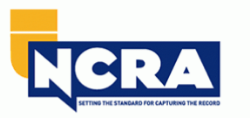Trial Presentation Helping Attorneys Present Evidence with Precision
Trial Presentation Helping Attorneys Present Evidence with Precision
Blog Article
Captivate the Court: Crucial Components of a Powerful Trial Presentation
Essential aspects such as understanding the audience, crafting a compelling narrative, and understanding verbal and non-verbal interaction are essential components of a reliable discussion. As these aspects link, they form a natural approach that not just informs but likewise engages jurors on several levels.

Understanding Your Target Market
Recognizing your audience is an essential element of efficient test discussion. An effective discussion hinges on the capacity to comprehend the demographics, worths, and predispositions of jurors. This comprehension educates just how arguments are framed, evidence exists, and sob stories are crafted, guaranteeing that the message reverberates with the jurors on a personal degree.
Study shows that jurors originated from varied histories and might have differing levels of comprehending pertaining to legal procedures (trial presentation). Therefore, it is important to prevent lawful jargon that could push away or confuse them. Rather, using clear, relatable language fosters engagement and understanding. Additionally, comprehending the jurors' potential prejudices and life experiences permits the trial speaker to anticipate objections and address problems proactively.
Reliable trial discussion likewise includes observing jurors' reactions during the proceedings. Engaging with jurors as individuals rather than a cumulative unit is essential in fostering a solid connection in the court room.

Crafting an Engaging Narrative
Crafting an engaging narrative is crucial in assisting jurors via the intricacies of a case. A well-structured narrative not only streamlines complex lawful concepts however additionally involves jurors on a psychological level, making the info extra relatable and remarkable.
This message must resonate with the jurors' values and experiences, cultivating a link that goes beyond mere realities. This chronological approach can assist jurors follow the progression of events, stressing reason and result.
Integrating human elements-- such as personal stories or anecdotes-- can further improve the narrative's impact. These elements evoke empathy, enabling jurors to envision the effects of the instance on the real worlds. Furthermore, utilizing a constant style throughout the discussion reinforces the major debate, making it less complicated for jurors to maintain crucial points.
Inevitably, a compelling story transforms a trial presentation from a mere recitation of realities right into a convincing story that astounds the jury, encouraging them to ponder with both reason and emotion.
Using Visual Aids
Integrating visual help into a test presentation can considerably enhance jurors' comprehension and retention of info. Aesthetic materials such as graphes, representations, pictures, and video clips can transform complicated legal ideas and evidence into easily absorbable formats. By involving multiple senses, these aids permit jurors to visualize the case's essential elements, making it simpler for them to follow along and understand complex information.
In addition, well-designed visual aids can emphasize critical factors and highlight relationships between various pieces of proof. For example, timelines can efficiently highlight the sequence of events, while annotated pictures can make clear particular information relevant to the instance. This not only help in understanding however likewise strengthens the narrative presented by the attorney.
It is crucial, nevertheless, to make sure that aesthetic aids are appropriate, clear, and properly provided. Overly complex or messy visuals might overwhelm jurors and diminish the message. When utilized sensibly, aesthetic aids serve to match the oral debates and improve the overall influence of the trial presentation. Ultimately, reliable aesthetic interaction can be a powerful tool in encouraging jurors and aiding them reach educated final thoughts.
Grasping Verbal Interaction
Efficient verbal interaction is crucial in a trial discussion, as it serves as the key ways through which attorneys convey their debates and connect with jurors. Simpleness in language promotes understanding and helps jurors comprehend complex concerns provided during the trial.
Furthermore, tone and pacing significantly influence just how messages are received. A positive tone conveys authority, while appropriate pacing allows jurors to absorb info without feeling overwhelmed. Attorneys should additionally vary their vocal inflections to emphasize bottom lines and preserve jurors' rate of interest throughout the discussion.
Furthermore, the organization of verbal arguments is important. Structuring the narrative logically and coherently aids jurors adhere to the attorney's logic, making it much easier for them to keep crucial information. Using persuasive strategies, such as storytelling, can also improve the emotional resonance of the disagreements presented, consequently creating an extra profound link with jurors.
Inevitably, mastering verbal interaction not just enhances a lawyer's situation but likewise cultivates trust and relationship with the court, considerably boosting the possibilities of a beneficial decision.

Involving With Body Language
Nonverbal communication plays an essential function in test presentations, commonly sharing messages that words alone can not express. Body movement, incorporating gestures, posture, face expressions, and eye contact, dramatically influences just how jurors view the integrity and sincerity of the speaker. A positive position, with shoulders back and an open position, can impart trust fund, read while closed-off body movement may suggest defensiveness or unpredictability.

Face expressions ought to reflect the feelings connected with the case, enhancing the narrative existing. For instance, a genuine expression during a poignant moment can elicit empathy and strengthen the psychological charm. Ultimately, understanding body movement is essential for efficient test presentations, as it boosts verbal communication and develops an engaging presence that reverberates with the court.
Verdict
To conclude, captivating the jury necessitates a strategic method that includes comprehending the audience, crafting an engaging narrative, making use of visual help, grasping verbal communication, and engaging through body language. Each element plays a critical function in producing a powerful trial presentation that resonates with jurors on both psychological and intellectual degrees (trial presentation). By incorporating these parts efficiently, attorneys can significantly enhance their capacity to persuade have a peek here and influence jury decision-making
Report this page